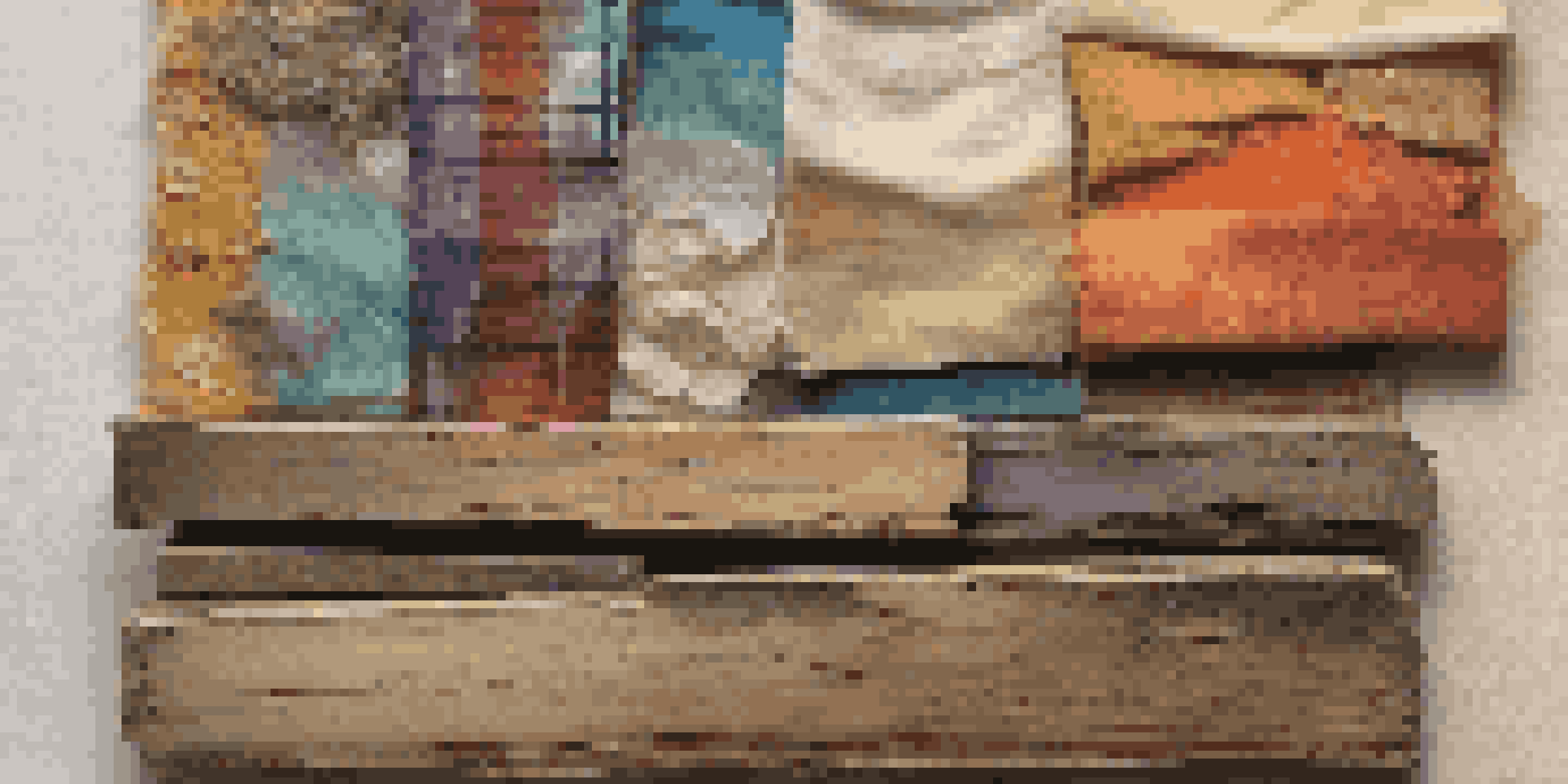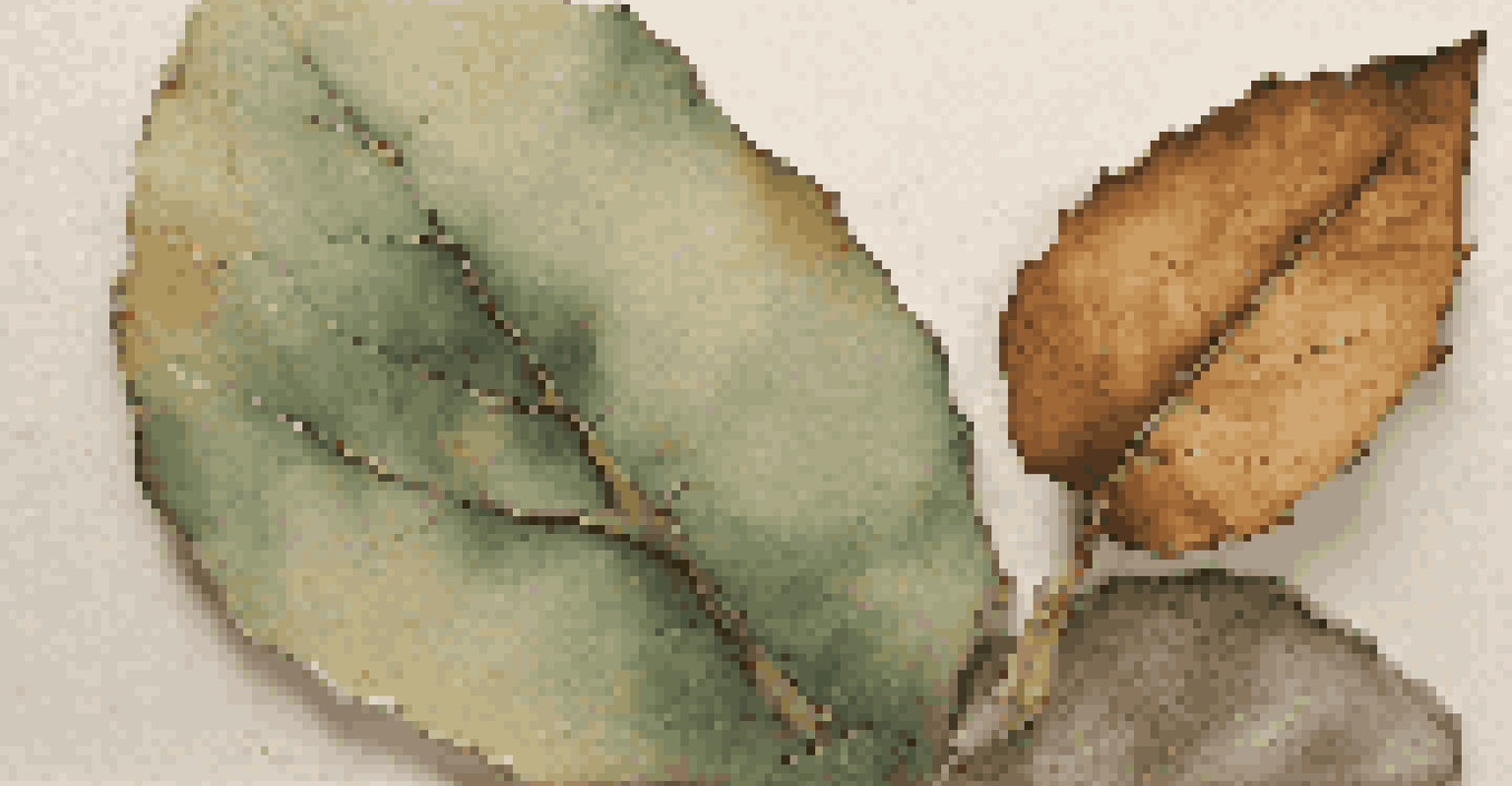Incorporating Found Objects into Mixed Media Art Creations

Understanding Mixed Media Art and Found Objects
Mixed media art is a captivating form of expression that combines different materials and techniques. It's like a visual buffet where artists can mix paints, fabrics, and even digital elements to create a unique piece. Found objects play a crucial role in this genre, as they add an unexpected twist to traditional art forms.
Art is not what you see, but what you make others see.
A found object can be anything from a rusted nail to a vintage photograph—items that hold stories or memories. By integrating these objects into your artwork, you not only enhance the visual appeal but also invite viewers to engage with the piece on a deeper level. It’s a way of recycling and giving new life to what might otherwise be discarded.
This approach encourages creativity and resourcefulness. Instead of sticking to conventional art supplies, artists can explore their surroundings for inspiration, turning everyday items into extraordinary artworks. The beauty of mixed media lies in the endless possibilities that come from merging the old with the new.
Finding Inspiration in Everyday Life
Inspiration for found objects can come from the most unexpected places. A simple walk down the street or a visit to a local thrift shop can yield treasures just waiting to be transformed. Keep your eyes peeled for items that catch your attention, whether it's an intriguing piece of wood or an interesting piece of fabric.

Consider the stories behind the objects you find. For instance, a weathered bottle may evoke memories of summer days at the beach, while an old toy might remind you of childhood adventures. These narratives can inspire the direction of your artwork, adding layers of meaning that resonate with viewers.
Mixed Media Art Explores Creativity
Mixed media art allows for the fusion of various materials and techniques, encouraging artists to express their creativity through found objects.
It’s also helpful to maintain a collection of potential materials. Designate a shelf or box where you can store your found objects until inspiration strikes. This way, you’ll always have a diverse range of items to spark your creativity when you sit down to create.
Techniques for Incorporating Found Objects
Once you have a collection of found objects, the next step is figuring out how to incorporate them into your mixed media art. One popular technique is layering, where you arrange objects on a canvas or board, creating depth and texture. This can be as simple as attaching a leaf over a painted background or using a piece of metal to create a striking contrast.
The best artist has no conception that a marble block does not contain within itself, but he sees the figure that is hidden in it.
Another technique is assemblage, which involves bringing together various elements to form a cohesive piece. This might include gluing, wiring, or even sewing items together. The key is to experiment and see what combinations resonate with you, as there are no strict rules in art.
Don’t hesitate to use mediums like paint, glue, or resin to enhance or preserve your found objects. For example, a painted background can make the natural textures of wood or metal stand out even more. The objective is to let each element shine while contributing to the overall harmony of the artwork.
Balancing Aesthetics and Storytelling
When working with found objects, it's essential to balance aesthetics with storytelling. While the visual appeal of your piece is important, the narrative behind your materials can add significant depth. Consider how each object contributes not only to the overall look but also to the story you want to tell.
For instance, a piece that includes a vintage map might symbolize adventure or nostalgia. Similarly, a rusty key may evoke themes of mystery or unlocking memories. By thoughtfully selecting and placing your found objects, you can guide viewers through the narrative you wish to convey.
Inspiration Lies in Everyday Objects
Everyday items can be transformed into art, and their stories can enhance the meaning and depth of a piece.
Remember, the journey of creating mixed media art is just as important as the finished product. Embrace the imperfections and unexpected outcomes that arise from using found objects. These elements often lead to the most compelling stories and visual experiences.
Preserving and Protecting Your Artwork
As you work with found objects, consider how to preserve and protect your artwork. Depending on the materials you use, some objects may be more susceptible to wear and tear over time. Applying a protective sealant or varnish can help safeguard your creation while enhancing its appearance.
For three-dimensional elements, ensure they are securely attached to your canvas or substrate. Using strong adhesives or hardware can prevent any pieces from falling off or getting damaged. This step is crucial, especially for outdoor displays or pieces that will be handled frequently.
Additionally, consider the environment where your art will be displayed. Exposure to sunlight, moisture, or extreme temperatures can affect the longevity of both your paint and found objects. By taking these precautions, you can ensure that your mixed media art remains vibrant and intact for years to come.
Embracing Imperfection in Your Art
One of the most liberating aspects of incorporating found objects into mixed media art is embracing imperfection. Unlike traditional art forms, where smooth lines and clean edges are often the goal, mixed media invites a more organic approach. The beauty lies in the uniqueness of each piece, reflecting the history and character of the found objects.
When you allow yourself to embrace imperfections, you open the door to creativity. A chipped ceramic piece or a faded photograph can add charm and authenticity to your artwork. Instead of striving for perfection, focus on the emotions and stories your pieces convey.
Embrace Imperfection in Art
Embracing imperfections in mixed media art fosters creativity and authenticity, allowing each piece to reflect its unique history.
This mindset can also alleviate the pressure many artists feel when creating. Remember, art is an exploration, and sometimes the most meaningful pieces emerge from unexpected mistakes or accidents. So, let go of perfectionism and enjoy the process of creation!
Sharing Your Mixed Media Creations with the World
Once you've created your mixed media artwork, it's time to share it with the world! Whether through social media, local art shows, or community galleries, showcasing your work can be a rewarding experience. Engaging with others who appreciate your art can provide valuable feedback and encouragement.
Consider documenting your creative process as well. Sharing behind-the-scenes glimpses of how you incorporate found objects can inspire others and foster a sense of community. People love to see the evolution of a piece from start to finish, and it can spark discussions about creativity and expression.

Lastly, don’t be afraid to tell the story behind your artwork. Sharing the inspiration and meaning behind your found objects can captivate your audience and deepen their connection to your piece. Remember, art is not just about the visuals; it’s also about the conversations and connections it fosters.